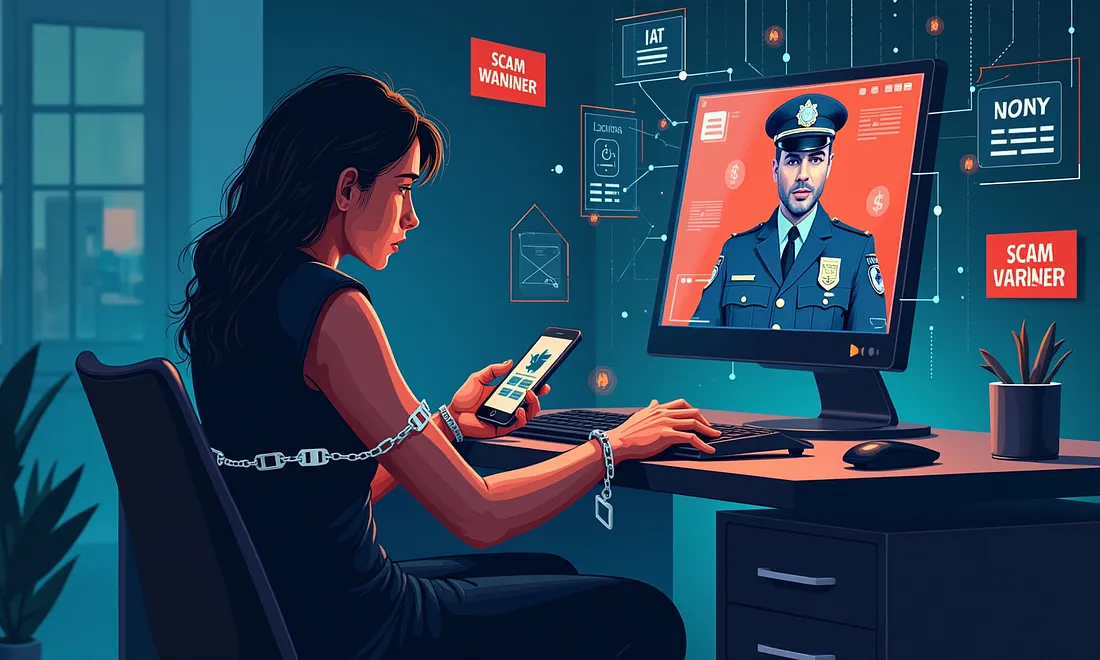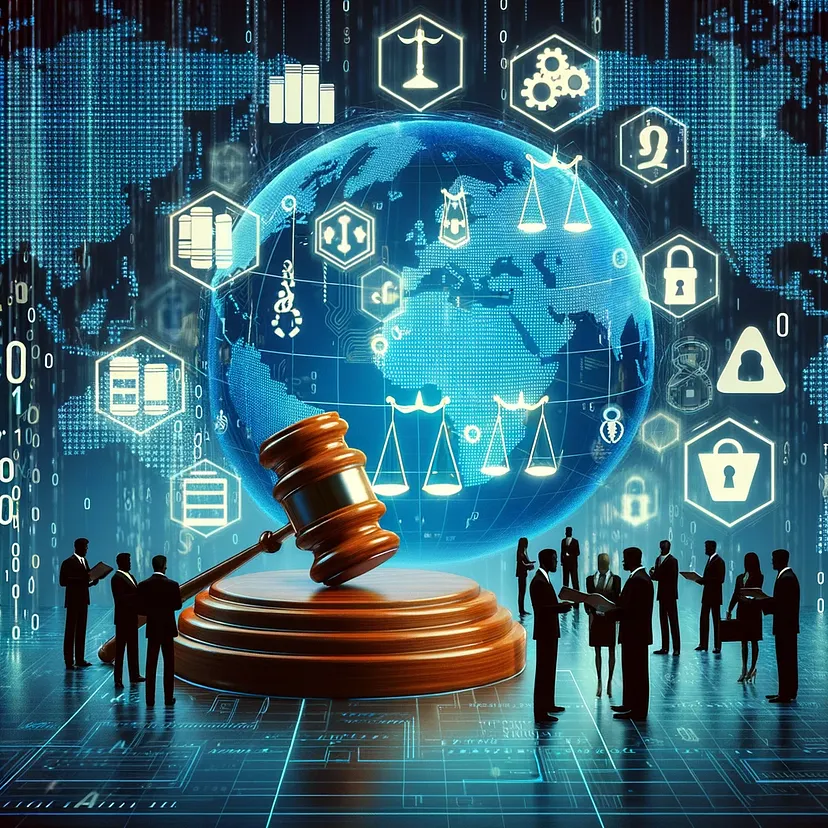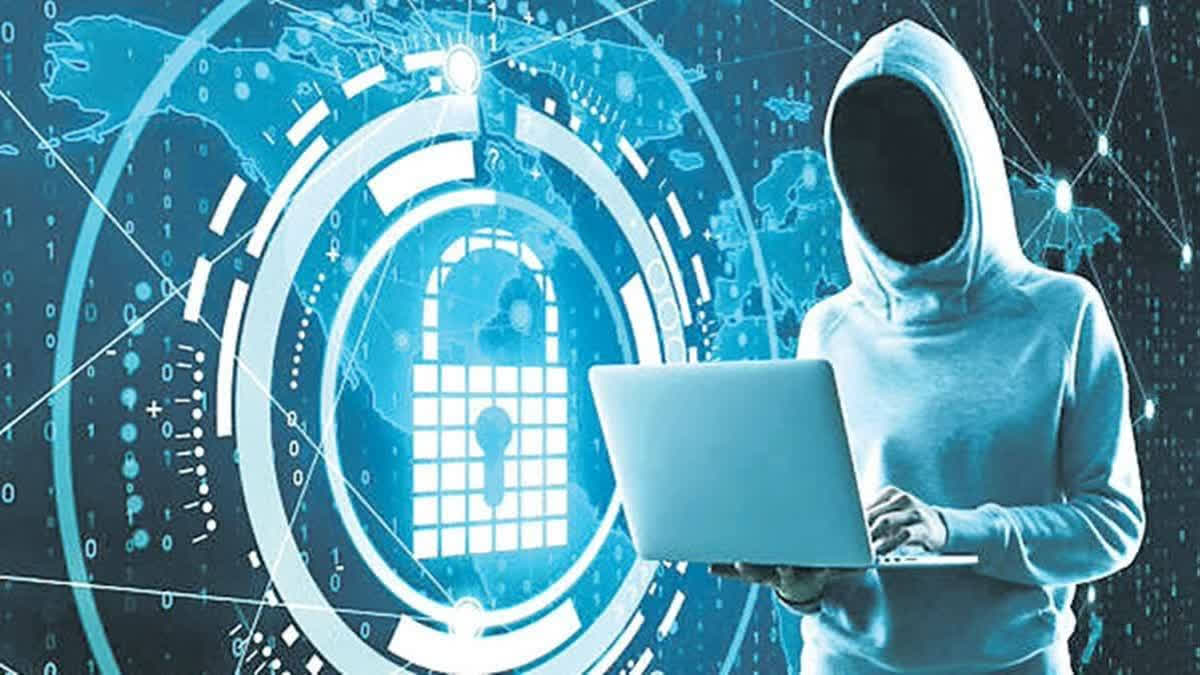Digital Arrests: How New Laws Are Protecting Your Privacy and Stopping Cybercrime, Identity Theft, and Fraud Before It's Too Late by ChapterTech
The digital age has brought convenience and opportunities like today. From online shopping to banking, socializing, and even working, most of us spend a significant portion of our lives online. However, this interconnectedness has led to an exponential rise in cybercrime, identity theft, and online fraud. These growing threats are increasing very fast and are affecting individuals and organizations in all over the world, and new laws and policies are being introduced to stop them. One of the most significant developments in this space is the concept of Digital Arrests—a key tool for law enforcement in fighting online crime.
In this blog post, we’ll talk about the basic to advanced things about digital arrest , I will also share some FAQs with you and we shall go into the world of digital crime and explore how coming laws and digital arrests are helping to safeguard your privacy, protect against cybercrime, and prevent identity theft and fraud. I'll also provide valuable tips on how you can protect yourself online. By the end of this post, you'll have a basic and important understanding of the growing digital arrest and practical steps to keep your digital identity safe.
The Rise of Cybercrime: A Digital Outbreak
In recent years, the scope and frequency of cybercrime are increasing like the starts in the word. This wave of illegal activity, ranging from hacking and phishing to identity theft and fraud.It has become one of the most pressing issues for individuals, businesses, and governments also. Cybercriminals are constantly evolving their techniques,and finding new ways to utilize the weakness in digital systems and steal sensitive data.
Types of Cybercrime: Everyone Should Know
Hacking: Hacking refers to unauthorized access to computer systems, networks, or databases with the intent to steal or manipulate data. Whether it's a personal device, corporate network, or government database, hackers aim to take benefits of the weaknesses to gain sensitive information.
Phishing: Phishing is a misleasing attempt by cybercriminals to trick people into disclosing personal or financial information by pretending to be legal organizations. It often comes in the form of unauthorized emails or websites designed that looks like trusted sources, such as banks or social media platforms.
Ransomware: Ransomware is a form of malware that encrypts a victim's files, making them unreachable until a ransom is paid. This type of attack has become particularly alarming in recent years.The hackers are targeting on both individuals and large organizations for great deals.
Cyberstalking: Cyberstalking involves using digital technology to harass, intimidate, or threaten individuals. Hackers often track personal information, spread false gossip, or engage in other forms of online harassment. In easy terms,they simply black male the person by stealing a private data.
Data Breaches: Data breaches occur when cybercriminals gain unauthorized access to sensitive data, such as personal details, financial information, or medical records. These breaches are often the starting to identity theft and fraud.
Impact of Cybercrime in Society
The result of cybercrime are far-reaching. For individuals, cybercrime can result in financial losses, reputational damage, and emotional distress. Identity theft and online fraud leave victims engaging with stolen money, disrupted lives, and a damaged sense of security. In addition, businesses face important losses due to data breaches, ransomware attacks, and fraudulent activities, which can also take away the trust of consumer.
History of Digital Arrests: The Evolution of Cybersecurity Enforcement
The concept of Digital Arrests—where individuals are compulsed for committing cybercrimes—has evolved rapidly in response to the rise of internet-related crimes. As digital technologies became essential to daily life, so too did the commonness of online criminal activity. Let's look at how digital arrests came into some history:
1. Early Days of Cybercrime and the Birth of Digital Forensics
The early days of the internet were marked by relatively simple digital crimes, such as hacking into computer systems for curiosity or mischief. However, as more people connected to the web, cybercrime became more advanced, leading to the need for law enforcement to understand how to investigate and apprehend offenders.
The first widely disclosed example of cybercrime occurred in the 1980s with the rise of hackers like Kevin Mitnick, who became notorious for breaking into government and corporate systems. This led to a realization that traditional methods of law enforcement were insufficient to handle digital crimes. The emergence of digital forensics as a discipline allowed investigators to collect and analyze digital evidence such as computer logs, data files, and email exchanges—tools that became essential for tracing and capturing cybercriminals.
2. The 1990s and the Legal Framework for Cybercrime
As the internet became mainstream in the 1990s, the rise of online crime prompted governments worldwide to create legal frameworks to combat this new wave of criminal activity. In the United States, the Computer Fraud and Abuse Act (CFAA) of 1986 criminalized unauthorized access to computers and networks, laying the groundwork for modern-day digital arrests. This law, along with other early cybersecurity regulations, empowered law enforcement agencies to pursue offenders who violated computer systems.
The Cybercrime Act of 1996 in the UK and similar laws across Europe aimed to address offenses like hacking, online fraud, and identity theft, creating the first legal definitions for digital crimes. These laws helped formalize the process by which law enforcement could arrest individuals committing cybercrime.
3. The 2000s: The Rise of Digital Forensics and Global Cooperation
In the early 2000s, the increasing complexity of cybercrime—coupled with the expansion of the internet into nearly every aspect of society—made it clear that global cooperation was necessary. Digital forensics continued to advance, and specialized agencies like the FBI’s Cyber Division were created to investigate and track cybercriminals.
A milestone in the history of digital arrests came in 2001 with the establishment of the Internet Crime Complaint Center (IC3), a partnership between the FBI and the National White Collar Crime Center (NW3C). This platform allowed individuals to report internet-based crimes, giving law enforcement agencies the data they needed to track down and apprehend offenders.
Additionally, the 2000s saw increased international cooperation between law enforcement agencies, such as INTERPOL and Europol, which began to create cross-border frameworks to address the growing threat of cybercrime. This marked the beginning of more effective global collaboration on digital arrests.
4. 2010-Present: Enhanced Tools and Digital Surveillance
As digital threats grew more sophisticated, law enforcement agencies began using cutting-edge tools to combat cybercrime. Digital surveillance, including tracking IP addresses, monitoring online activity, and analyzing financial transactions, became increasingly important in identifying and apprehending cybercriminals. The use of artificial intelligence (AI) and machine learning has enabled agencies to predict and prevent cybercrime with greater accuracy.
One significant milestone occurred in 2013, when the FBI arrested Ross Ulbricht, the creator of the Silk Road, a notorious online black market for illegal goods. Ulbricht's arrest marked a major turning point in the enforcement of online crime laws, with law enforcement using digital surveillance, blockchain analysis, and forensics to trace and capture him despite his attempt to hide behind a veil of anonymity.
In addition to traditional cybercrime, modern digital arrests now include tackling ransomware attacks, cryptocurrency fraud, and deep web activities. As criminals continue to adapt to new technologies, law enforcement is continually evolving to keep up with their tactics.
Identity Theft: The Silent Threat
Identity theft is one of the most damaging consequences of cybercrime. According to recent reports, millions of people are affected by identity theft each year, with financial losses running into billions of dollars. Cybercriminals use various methods to steal personal data and impersonate their victims for financial gain.
How Does Identity Theft Occur?
Data Breaches: Cybercriminals often target organizations to steal personal information from their databases. Once they have access to sensitive data, they may sell it on the dark web or use it for their own fraudulent activities.
Phishing and Social Engineering: Through phishing attacks, criminals trick individuals into revealing their personal details by impersonating trusted institutions, like banks, government bodies, or even friends.
Skimming: Skimming devices are installed on ATMs or credit card readers to steal information from your credit or debit card. This information is then used for unauthorized transactions.
Stolen Mail: Cybercriminals also target physical mail to steal personal documents, such as credit card statements or tax forms, which can then be used for identity theft.
The Impact of Identity Theft
The effects of identity theft can be long-lasting. Victims often face financial distress, including unauthorized charges to their accounts, difficulty securing loans, and a damaged credit history. The emotional toll can also be significant, as individuals feel violated and helpless in the aftermath of having their identity stolen.
Online Fraud: The Many Faces of Deception
Fraud is another significant byproduct of the digital world, and it takes many forms. Cybercriminals exploit people’s trust to steal money, personal data, and other assets. Whether it’s fraudulent online shopping or fake investment schemes, online fraud affects millions of individuals and businesses.
Common Types of Online Fraud
E-commerce Fraud: Fraudulent online stores deceive customers by offering attractive deals, only to take their money without delivering goods or services.
Investment Fraud: Cybercriminals often create fake investment opportunities, such as fraudulent cryptocurrency schemes or high-return promises, to scam victims.
Online Auction Fraud: This type of fraud occurs when individuals sell counterfeit or non-existent items on online auction platforms.
Tech Support Scams: Fraudsters impersonate tech support representatives, claiming to fix a supposed issue with your computer, often charging hefty fees and installing malware.
Romance Scams: Cybercriminals use fake identities on dating sites or social media platforms to lure victims into relationships and then ask for money, claiming various emergencies or financial problems.
Digital Arrests: A Powerful Tool Against Online Crime
As cybercrime grows in scale and complexity, law enforcement agencies worldwide have been forced to evolve and adapt. One of the most promising tools in this fight is the concept of Digital Arrests, a key part of the modern digital justice system.
How Digital Arrests Work
Digital arrests rely on the evidence collected through digital surveillance, digital forensics, and other tools. Law enforcement agencies are able to track a cybercriminal’s online footprint by monitoring activity on social media, websites, and email accounts. Additionally, many cybercriminals leave digital traces in the form of IP addresses, usernames, and geolocation data.
Once the evidence has been gathered, a suspect can be arrested in real life, and the authorities can bring them to trial for their online crimes. The rise of digital warrants and extradition agreements has also facilitated arrests across borders, allowing law enforcement agencies to bring cybercriminals to justice regardless of where they are located.
Conclusion: Protecting Your Privacy in a Digital World
In today’s interconnected world, the importance of cybersecurity and digital arrests cannot be overstated. With the rising prevalence of online crime, protecting your personal information and understanding your legal rights is essential for staying safe in the digital landscape.
By staying informed about the risks of cybercrime, practicing good digital hygiene, and using tools to protect your privacy, you can reduce your vulnerability to cybercriminals. If you become a victim, it’s crucial to report the crime to the relevant authorities and take action to restore your identity and secure your finances.
Digital arrests represent a significant step forward in the fight against cybercrime, offering hope for a future where online crime can be tackled more effectively. By staying vigilant and working together, we can create a safer digital world for everyone.
FAQs: Digital Arrests and Cybersecurity
1. What is a Digital Arrest? A Digital Arrest refers to the apprehension of an individual involved in cybercrime, including hacking, online fraud, and identity theft, using digital forensics and surveillance techniques.
2. How do law enforcement agencies track cybercriminals? Law enforcement uses digital surveillance, IP tracking, blockchain analysis, and digital forensics to track cybercriminals. They may also rely on international cooperation and digital warrants for cross-border arrests.
3. What is the role of digital forensics in solving cybercrimes? Digital forensics helps investigators recover and analyze digital evidence, such as computer logs, emails, and files, to trace cybercriminals and build a case for their arrest.
4. How can I protect myself from identity theft? To protect yourself, use strong, unique passwords, monitor your credit report, avoid sharing personal information online, and be cautious about suspicious emails and websites.
5. What can I do if I become a victim of online fraud? If you fall victim to fraud, immediately report it to the relevant authorities, such as your bank, the Federal Trade Commission (FTC), or your country’s cybercrime unit. It's important to act quickly to minimize damage.
If you like my post, please comment and follow. It gives me a lot of motivation and confidence to work more better and give you more informative articles.


















0 Comments